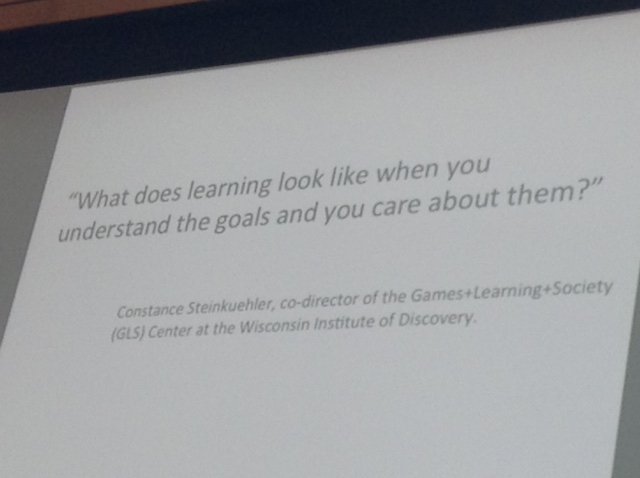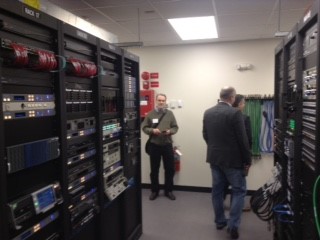Searching for "education technology"
Routledge. (n.d.). Handbook of Mobile Learning (Hardback) – Routledge [Text]. Retrieved May 27, 2015, from
http://www.routledge.com/books/details/9780415503693/
Crompton, Muilenburg and Berge’s definition for m-learning is “learning across multiple contexts, through social and content interactions, using personal electronic devices.”
The “context”in this definition encompasses m-learnng that is formalself-directed, and spontaneous learning, as well as learning that is context aware and context neutral.
therefore, m-learning can occur inside or outside the classroom, participating in a formal lesson on a mobile device; it can be self-directed, as a person determines his or her own approach to satisfy a learning goal; or spontaneous learning, as a person can use the devices to look up something that has just prompted an interest (Crompton, 2013, p. 83). (Gaming article Tallinn)Constructivist Learnings in the 1980s – Following Piage’s (1929), Brunner’s (1996) and Jonassen’s (1999) educational philosophies, constructivists proffer that knowledge acquisition develops through interactions with the environment. (p. 85). The computer was no longer a conduit for the presentation of information: it was a tool for the active manipulation of that information” (Naismith, Lonsdale, Vavoula, & Sharples, 2004, p. 12)Constructionist Learning in the 1980s – Constructionism differed from constructivism as Papert (1980) posited an additional component to constructivism: students learned best when they were actively involved in constructing social objects. The tutee position. Teaching the computer to perform tasks.Problem-Based learning in the 1990s – In the PBL, students often worked in small groups of five or six to pool knowledge and resources to solve problems. Launched the sociocultural revolution, focusing on learning in out of school contexts and the acquisition of knowledge through social interaction
Socio-Constructivist Learning in the 1990s. SCL believe that social and individual processes are independent in the co-construction of knowledge (Sullivan-Palinscar, 1998; Vygotsky, 1978).
96-97). Keegan (2002) believed that e-learning was distance learning, which has been converted to e-learning through the use of technologies such as the WWW. Which electronic media and tools constituted e-learning: e.g., did it matter if the learning took place through a networked technology, or was it simply learning with an electronic device?
99-100. Traxler (2011) described five ways in which m-learning offers new learning opportunities: 1. Contingent learning, allowing learners to respond and react to the environment and changing experiences; 2. Situated learning, in which learning takes place in the surroundings applicable to the learning; 3. Authentic learning;
Diel, W. (2013). M-Learning as a subfield of open and distance education. In: Berge and Muilenburg (Eds.). Handbook of Mobile Learning.
- 15) Historical context in relation to the field of distance education (embedded librarian)
- 16 definition of independent study (workshop on mlearning and distance education
- 17. Theory of transactional distance (Moore)
Cochrane, T. (2013). A Summary and Critique of M-Learning Research and Practice. In: Berge and Muilenburg (Eds.). Handbook of Mobile Learning.
( Galin class, workshop)
P 24
According to Cook and Sharples (2010) the development of M learning research has been characterized by three general faces a focus upon Devices Focus on learning outside the classroom He focus on the mobility of the learner
- 25
Baby I am learning studies focus upon content delivery for small screen devices and the PDA capabilities of mobile devices rather than leveraging the potential of mobile devices for collaborative learning as recommended by hope Joyner Mill Road and sharp P. 26 Large scale am learning project Several larger am learning projects have tended to focus on specific groups of learners rather than developing pedagogical strategies for the integration of am mlearning with him tertiary education in general
27
m learning research funding
In comparison am learning research projects in countries with smaller population sizes such as Australia and New Zealand are typiclly funded on a shoe string budget
28
M-learning research methodologies
I am learning research has been predominantly characterized by short term case studies focused upon The implementation of rapidly changing technologies with early adopters but with little evaluation reflection or emphasis on mainstream tertiary-education integration
p. 29 identifying the gaps in M learning research
lack of explicit underlying pedagogical theory Lack of transferable design frameworks
Cochrane, T. (2011).Proceedings ascilite 2011 Hobart:Full Paper 250 mLearning: Why? What? Where? How? http://www.ascilite.org/conferences/hobart11/downloads/papers/Cochrane-full.pdf
(Exploring mobile learning success factors http://files.eric.ed.gov/fulltext/EJ893351.pdf
https://prezi.com/kr94rajmvk9u/mlearning/
https://thomcochrane.wikispaces.com/MLearning+Praxis
Pachler, N., Bachmair, B., and Cook, J. (2013). A Sociocultural Ecological Frame for Mobile Learning. In: Berge and Muilenburg (Eds.). Handbook of Mobile Learning.
(Tom video studio)
35 a line of argumentation that defines mobile devices such as mobile phones as cultural resources. Mobile cultural resources emerge within what we call a “bile complex‘, which consist of specifics structures, agency and cultural practices.
36 pedagogy looks for learning in the context of identify formation of learners within a wider societal context However at the beginning of the twentieth first century and economy oriented service function of learning driven by targets and international comparisons has started to occupy education systems and schools within them Dunning 2000 describes the lengthy transformation process from natural assets Land unskilled labor to tangible assets machinery to intangible created assets such as knowledge and information of all kinds Araya and Peters 2010 describe the development of the last 20 years in terms of faces from the post industrial economy to d information economy to the digital economy to the knowledge economy to the creative economy Cultural ecology can refer to the debate about natural resources we argue for a critical debate about the new cultural resources namely mobile devices and the services for us the focus must not be on the exploitation of mobile devices and services for learning but instead on the assimilation of learning with mobiles in informal contacts of everyday life into formal education
37
Ecology comes into being is there exists a reciprocity between perceiver and environment translated to M learning processes this means that there is a reciprocity between the mobile devices in the activity context of everyday life and the formal learning
45
Rather than focusing on the acquisition of knowledge in relation to externally defined notions of relevance increasingly in a market-oriented system individual faces the challenge of shape his/her knowledge out of his/her own sense of his/her world information is material which is selected by individuals to be transformed by them into knowledge to solve a problem in the life world
Crompton, H. (2013). A Sociocultural Ecological Frame for Mobile Learning. In: Berge and Muilenburg (Eds.). Handbook of Mobile Learning.
p. 47 As philosophies and practice move toward learner-centered pedagogies, technology in a parallel move, is now able to provide new affordances to the learner, such as learning that is personalized, contextualized, and unrestricted by temporal and spatial constrains.
The necessity for m-learning to have a theory of its own, describing exactly what makes m-learning unique from conventional, tethered electronic learning and traditional learning.
48 . Definition and devices. Four central constructs. Learning pedagogies, technological devices, context and social interactions.
“learning across multiple contexts, through social and content interactions, using personal electronic devices.”
It is difficult, and ill advisable, to determine specifically which devices should be included in a definition of m-learning, as technologies are constantly being invented or redesigned. (my note against the notion that since D2L is a MnSCU mandated tool, it must be the one and only). One should consider m-learning as the utilization of electronic devices that are easily transported and used anytime and anywhere.
49 e-learning does not have to be networked learning: therefore, e-learnng activities could be used in the classroom setting, as the often are.
Why m-learning needs a different theory beyond e-learning. Conventional e-learning is tethered, in that students are anchored to one place while learning. What sets m-learning apart from conventional e-learning is the very lack of those special and temporal constrains; learning has portability, ubiquitous access and social connectivity.
50 dominant terms for m-learning should include spontaneous, intimate, situated, connected, informal, and personal, whereas conventional e-learning should include the terms computer, multimedia, interactive, hyperlinked, and media-rich environment.
51 Criteria for M-Learning
second consideration is that one must be cognizant of the substantial amount of learning taking place beyond the academic and workplace setting.
52 proposed theories
Activity theory: Vygotsky and Engestroem
Conversation theory: Pask 1975, cybernetic and dialectic framework for how knowledge is constructed. Laurillard (2007) although conversation is common for all forms of learning, m-learning can build in more opportunities for students to have ownership and control over what they are learning through digitally facilitated, location-specific activities.
53 multiple theories;
54 Context is central construct of mobile learning. Traxler (2011) described the role of context in m-learning as “context in the wider context”, as the notion of context becomes progressively richer. This theme fits with Nasimith et al situated theory, which describes the m-learning activities promoting authentic context and culture.
55. Connectivity
unlike e-learning, the learner is not anchored to a set place. it links to Vygotsky’s sociocultural approach.
Learning happens within various social groups and locations, providing a diverse range of connected learning experiences. furthermore, connectivity is without temporal restraints, such as the schedules of educators.
55. Time
m-larning as “learning dispersed in time”
55. personalization
my note student-centered learning
Moura, A., Carvalho, A. (2013). Framework For Mobile Learning Integration Into Educational Contexts. In: Berge and Muilenburg (Eds.). Handbook of Mobile Learning.
p. 58 framework is based on constructivist approach, Activity theory, and the attention, relevance and confidence satisfaction (ARCS) model http://www.arcsmodel.com/#!
http://torreytrust.com/images/ITH_Trust.pdf
to set a didacticmodel that can be applied to m-learning requires looking at the characteristics of specific devi
https://www.researchgate.net/profile/Nadire_Cavus/publication/235912545_Basic_elements_and_characteristics_of_mobile_learning/links/02e7e526c1c0647142000000.pdf
https://eleed.campussource.de/archive/9/3704
Case Study 6: Mozilla Open Badges
http://www.educause.edu/library/resources/case-study-6-mozilla-open-badges
Badges can play a crucial role in the connected learning ecology by acting as a bridge between contexts, making these alternative learning channels and types of learning more viable, portable, and impactful. Badges can be awarded for a potentially limitless set of individual skills—regardless of where each skill is developed—and a collection of badges can begin to serve as a virtual résumé of competencies and qualities for key stakeholders, including peers, schools, or potential employers. Specifically, badges support capturing and communicating learning paths, signaling achievement, motivating learning, and driving innovation and flexibility, as well as building identity, reputation, and kinship. Thus, badges can provide a way to translate all types of learning into a powerful tool for getting jobs, finding communities of practice, demonstrating skills, and seeking out further learning.
Peer badges were also built around the peer-to-peer interactions and were awarded directly from one peer to another. Finally, participation badges were based on stealth assessment and data-tracking logic built into the learning environment. While the sample size was small due to constraints of the course cycles, the pilot resulted in a solid proof-of-concept of the potential for badges and these approaches to assessment.
How Badges Really Work in Higher Education
http://campustechnology.com/articles/2013/06/20/how-badges-really-work-in-higher-education.aspx
The badges have several layers, Wisser says. While the top level signifies that you completed elements of the coursework, the badges have stripes for other accomplishments such as leading a discussion or teaching peers. “These badges are visible to other students, and if you are struggling in one area, you could turn to someone more accomplished–as shown by their badge–for help. Or if you were strong in a certain area and saw someone else was struggling, you could reach out to that person.”
More in this IMS blog on badges:
https://blog.stcloudstate.edu/ims/?s=badges
7 Things You Should Know About Developments in Instructional Design
http://www.educause.edu/library/resources/7-things-you-should-know-about-developments-instructional-design
Please read the entire EducCause article here: eli7120
discussion of IMS with faculty:
- pedagogical theories
- learning outcome
- design activities
- students’ multimedia assignments, which lead to online resources
- collaboration with other departments for the students projects
- moving the class to online environment (even if kept hybrid)
What is it?
the complexity of the learning environment is turning instructional design into a more dynamic activity, responding to changing educational models and expectations. Flipped classrooms, makerspaces, and competency-based learning are changing how instructors work with students, how students work with course content, and how mastery is verified. Mobile computing, cloud computing, and data-rich repositories have altered ideas about where and how learning takes place.
How does it work?
One consequence of these changes is that designers can find themselves filling a variety of roles. Today’s instructional designer might work with subject-matter experts, coders, graphic designers, and others. Moreover, the work of an instructional designer increasingly continues throughout the duration of a course rather than taking place upfront.
Who’s doing it?
The responsibility for designing instruction traditionally fell to the instructor of a course, and in many cases it continues to do so. Given the expanding role and landscape of technology—as well as the growing body of knowledge about learning and about educational activities and assessments— dedicated instructional designers are increasingly common and often take a stronger role.
Why is it significant?
The focus on student-centered learning, for example, has spurred the creation of complex integrated learning environments that comprise multiple instructional modules. Competency-based learning allows students to progress at their own pace and finish assignments, courses, and degree plans as time and skills permit. Data provided by analytics systems can help instructional designers predict which pedagogical approaches might be most effective and tailor learning experiences accordingly. The use of mobile learning continues to grow, enabling new kinds of learning experiences.
What are the downsides?
Given the range of competencies needed for the position, finding and hiring instructional designers who fit well into particular institutional cultures can be challenging to the extent that instructors hand over greater amounts of the design process to instructional designers, some of those instructors will feel that they are giving up control, which, in some cases, might appear to be simply the latest threat to faculty authority and autonomy. My note: and this is why SCSU Academic Technology is lead by faculty not IT staff.
Where is it going?
In some contexts, instructional designers might work more directly with students, teaching them lifelong learning skills. Students might begin coursework by choosing from a menu of options, creating their own path through content, making choices about learning options, being more hands-on, and selecting best approaches for demonstrating mastery. Educational models that feature adaptive and personalized learning will increasingly be a focus of instructional design. My note: SCSU CETL does not understand instructional design tendencies AT ALL. Instead of grooming faculty to assume the the leadership role and fill out the demand for instructional design, it isolates and downgrades (keeping traditional and old-fashioned) instructional design to basic tasks of technicalities done by IT staff.
What are the implications for teaching and learning?
By helping align educational activities with a growing understanding of the conditions,
tools, and techniques that enable better learning, instructional designers can help higher education take full advantage of new and emerging models of education. Instructional
designers bring a cross-disciplinary approach to their work, showing faculty how learning activities used in particular subject areas might be effective in others. In this way, instructional
designers can cultivate a measure of consistency across courses and disciplines in how educational strategies and techniques are incorporated. Designers can also facilitate the
creation of inclusive learning environments that offer choices to students with varying strengths and preferences.
More on instructional design in this IMS blog:
https://blog.stcloudstate.edu/ims/2014/10/13/instructional-design/
A Blend-Online listserv thread regarding the choice of LMS and the future of LMS
Schoology HEd – Digital Learning Ecosystem (March 2015) (PDF document)
From: The EDUCAUSE Blended and Online Learning Constituent Group Listserv [mailto:BLEND-ONLINE@LISTSERV.EDUCAUSE.EDU] On Behalf Of Robert Tousignant
Sent: Thursday, April 9, 2015 1:41 PM
To: BLEND-ONLINE@LISTSERV.EDUCAUSE.EDU
Subject: Re: [BLEND-ONLINE] Faculty Involvement in LMS Selection
I’ve been reviewing this thread and thought I’d introduce a new player… Schoology is getting the attention of the analyst community and gobbling up the SIIA Codie awards for best learning platform the last couple of years. (Please note, I am not an impartial observer and I do a horse in the race)
The attached document includes information that will explain a new paradigm for evaluating an LMS that we see being adopted more and more – a move from a focus on utility (features and functions) to one focused standards, interoperability and the user experience (UI/UX).
Feel free to reach out directly if I can be of assistance.
Robert Tousignant
Sr. Director
Schoology Higher Education
O: (212)213-8333 x69
M: (617)838-1366
rtousignant@schoology.com
Colorado State University’s Global Campus Announces Strategic Partnership with Schoology
From: Edward Garay <garay@UIC.EDU>
Reply-To: The EDUCAUSE Blended and Online Learning Constituent Group Listserv <BLEND-ONLINE@LISTSERV.EDUCAUSE.EDU>
Date: Thursday, April 9, 2015 at 2:27 PM
To: “BLEND-ONLINE@LISTSERV.EDUCAUSE.EDU” <BLEND-ONLINE@LISTSERV.EDUCAUSE.EDU>
Subject: Re: [BLEND-ONLINE] Faculty Involvement in LMS Selection
These days, I tend to favor LMS Review/Selection initiatives that take one to two years to complete, but as always, it depends on the institution, its readiness to spec the needs of their faculty/students and evaluate viable options, as well as the campus resources available to nurture a possible smooth LMS platform transition. I like pointing out to the well-executed recent LMS selection initiatives carried out by UCF, Northwestern, Indiana, Harvard and Dartmouth, although there are many others.
I am also fond of Educause Review 2014 article on Selecting a Learning Management System: Advice from an Academic Perspective available at http://www.educause.edu/ero/article/selecting-learning-management-system-advice-academic-perspective
—
— Ed Garay
University of Illinois at Chicago
UIC School of Public Health
http://www.twitter.com/garay
*** Attend the FACULTY SUMMER INSTITUTE :: Wed-Fri May 27-29 at Urbana-Champaign
#pedagogy #BlendedLearning #classroom #teaching #OnlineLearning #EdTech
http://go.illinois.edu/facultysummerinstitute
_____________________________
From: Hap Aziz <hapaziz@gmail.com>
Sent: Thursday, April 9, 2015 12:30 PM
Subject: Re: [BLEND-ONLINE] Faculty Involvement in LMS Selection
To: <blend-online@listserv.educause.edu>
That’s sounds like a similar timeframe to what we had at UB when we moved from Blackboard to Canvas. While LTI didn’t not play a large role in the decision-making process as we changed our LMS, it is now a central consideration as we look to acquire any new app functionality for our learning environment.
I’m setting up an area in the IMS forum area for LTI policy discussion. I’ll share that location with the group shortly so we can take some of the in-the-weeds discussion offline here.
Hap Aziz
Associate Vice President
University of Bridgeport
http://bridgeport.edu
Connected Learning Innovation Community
IMS Global Learning Consortium
http://imsglobal.org
On Wed, Apr 8, 2015 at 3:25 PM, Sam Bachert <BachertS@sanjuancollege.edu> wrote:
Hap,
The selection process started in January of 2013 and the task force voted at the end of May of 2013 unanimously for Canvas so about 5 months. By October we started training faculty in preparation for the Spring 2014 semester what was amazing about our transition to Canvas was that we had everyone moved out of ANGEL by start of Summer 14 so we only had 1 semester where we were supporting both ANGEL and Canvas. The use of LTI integrations and Canvas makes our jobs a lot easier to support the various tools that faculty are adopting for their classes – it also makes it a lot easier for faculty to integrate other technologies and keep them in the LMS or have single sign on so it is more seamless for students.
Thanks, Sam
Samuel R. Bachert
Manager, Online Services
ellucian®
San Juan College
4601 College Boulevard
Farmington, NM 87402
Voice: 505.566.3310 Mobile: 505.609.0573 Fax: 505.566.3570
bacherts@sanjuancollege.edu * samuel.bachert@ellucian.com
http://www.ellucian.com
Follow us:
CONFIDENTIALITY: This email (including any attachments) may contain confidential, proprietary and privileged information, and unauthorized disclosure or use is prohibited. If you received this email in error, please notify the sender and delete this email from your system. Thank you.
From: The EDUCAUSE Blended and Online Learning Constituent Group Listserv [mailto:BLEND-ONLINE@LISTSERV.EDUCAUSE.EDU] On Behalf Of Hap Aziz
Sent: Tuesday, April 07, 2015 7:09 PM
To: BLEND-ONLINE@LISTSERV.EDUCAUSE.EDU
Subject: Re: [BLEND-ONLINE] Faculty Involvement in LMS Selection
Hey, Sam, long time no see! Do you know about how long your whole selection process took? Also, does LTI conformance make your job with academic technology more straightforward to deal with?
Hap Aziz
Associate Vice President
University of Bridgeport
http://bridgeport.edu
Connected Learning Innovation Community
IMS Global Learning Consortium
http://imsglobal.org
On Thu, Apr 2, 2015 at 1:27 PM, Sam Bachert <BachertS@sanjuancollege.edu> wrote:
JeJe,
I am at San Juan College and we also recently went through the selection process for a new LMS and like others who have commented switched to Canvas (from ANGEL). We ended up with a selection team that was primarily faculty, a couple students, and a handful of technology staff that reviewed the various LMSs and then made our final decision. If you would like I can get you the contact information for the faculty who assisted on the selection team.
Thanks,
Sam
Samuel R. Bachert
Director of Academic Technology
ellucian®
San Juan College
4601 College Boulevard
Farmington, NM 87402
Voice: 505.566.3310 Mobile: 505.609.0573 Fax: 505.566.3570
bacherts@sanjuancollege.edu * samuel.bachert@ellucian.com
http://www.ellucian.com
Follow us:
CONFIDENTIALITY: This email (including any attachments) may contain confidential, proprietary and privileged information, and unauthorized disclosure or use is prohibited. If you received this email in error, please notify the sender and delete this email from your system. Thank you.
From: The EDUCAUSE Blended and Online Learning Constituent Group Listserv [mailto:BLEND-ONLINE@LISTSERV.EDUCAUSE.EDU] On Behalf Of Noval, JeJe (LLU)
Sent: Wednesday, April 01, 2015 9:25 PM
To: BLEND-ONLINE@LISTSERV.EDUCAUSE.EDU
Subject: [BLEND-ONLINE] Faculty Involvement in LMS Selection
Hello Colleagues,
Were any of you, faculty members, involved in the learning management selection process of your educational institution? If so, would it be possible to interview you in the future for a research study?
Best,
JeJe Noval, MS, RD
Assistant Professor
Loma Linda University
Academy of distinguished teachers, Innovation
University of Minnesota, McNamara Alumni Center – Twin Cities Campus. April 8, 2015
Full program available here: https://guidebook.com/g/adt/

Randy Bass
Randy Bass
https://www.linkedin.com/pub/randall-bass/14/94/77
flipping disruption into Design
there are two type of universities: the ones that are in control of change and the ones, which are pressed to change.
what kind of education is needed at this moment of history.
Assumptions: 5-10 years will be for a first time outcompeted in terms of delivering information and degrees. What is that the university can do distinctively well that WWW cannot do: mentored learning and the arc of learning (beyond collection of granular separate learning)
book: The New Division of Labor. http://www.amazon.com/The-New-Division-Labor-Computers/dp/0691124027
External forces of potential disruption: 1. MOOCs, nearly free education, 2. skilled-based learning (Codeacademy, Udacity), 3. data analytic 4. public pressure on access, metrics of impact.
Gartner group (http://www.gartner.com/technology/home.jsp) hype cycle : overvalued in a short term and undervalued in a long term. MOOC is excellent example.
NMC: competing models of education.
learning analytics. adaptive learning, intelligent tutoring etc. Open Learning Initative. http://oli.cmu.edu/
In the 19th century, railroads companies which were in the business of railroad companies went under; the ones which were in the business of transportation survived. Parallel, universities, which are in the business of delivering information will die out; the ones, which will survive must look to a very different picture.

formative wider outcomes
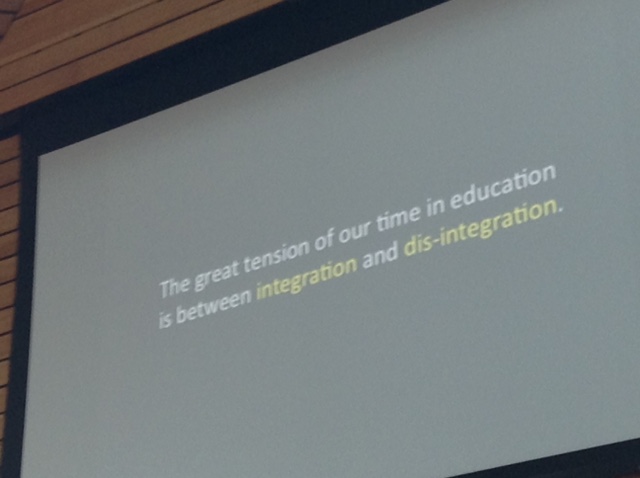
integration and dis-integration
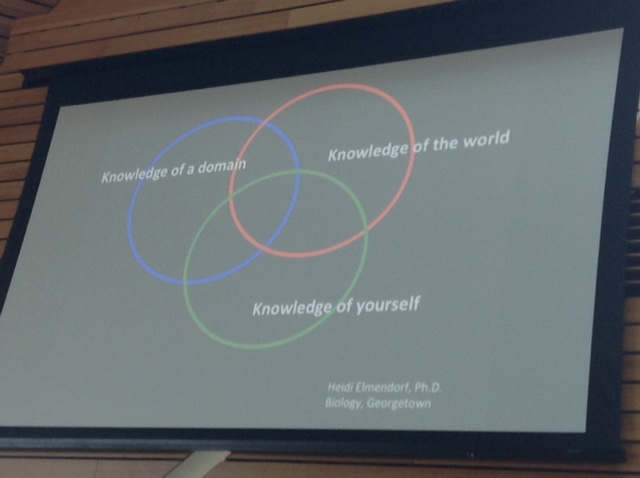
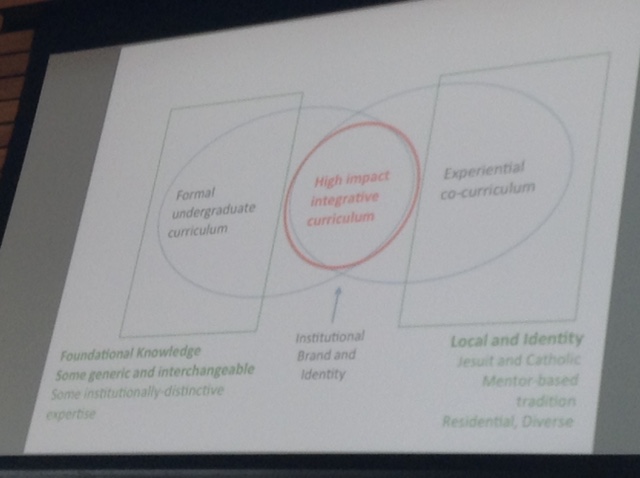
high impact integrative curriculum

what makes high inpact practices high impact
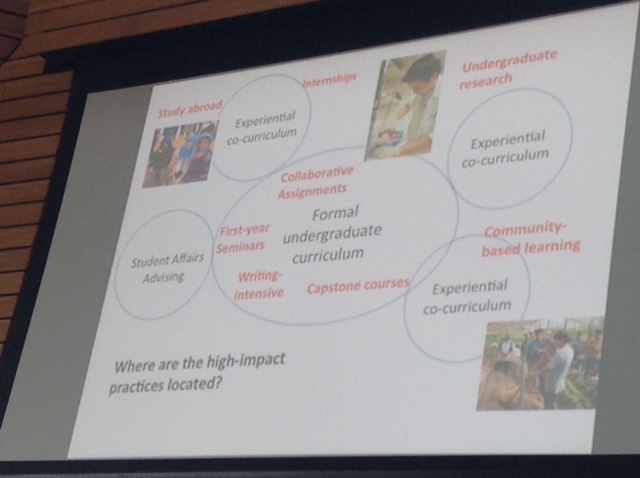
formal versus informal
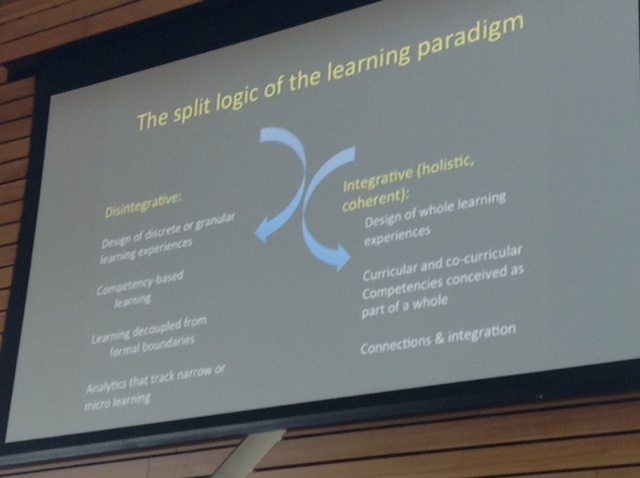
Selected sessions:
The Value of Assessing Outcomes of Teaching Methodologies to guide instructional design
https://guidebook.com/guide/33541/event/10594685/
game-based learning:
Upping your Game – Best Practices in Using Game-Based Learning
https://guidebook.com/guide/33541/event/10594684/
Implementing Game Dynamics in Moodle
https://guidebook.com/guide/33541/event/10693434/
visuals:
Engaging Students through Video Integration
https://guidebook.com/guide/33541/event/10676389/
https://guidebook.com/guide/33541/event/10676375/
Using Flipgrid Video Commentary to Share Student Learning
https://guidebook.com/guide/33541/event/10676361/
————
Enhancing learning with online narrated presentations using VoiceThread
https://guidebook.com/guide/33541/event/10676372/
flipped:
Essential Technology & Tools for Flipping Your Classroom
https://guidebook.com/guide/33541/event/10676385/
Improving Delivery of Technical Course Content through Incremental Use of Classroom “Flipping”
https://guidebook.com/guide/33541/event/10676376/
https://guidebook.com/guide/33541/event/10594850/
The Pros and Cons of Flipping the Classroom
https://guidebook.com/guide/33541/event/10676323/
Using Google Forms for Student Group Evaluations
https://guidebook.com/guide/33541/event/10734863/
Library:
The University Libraries Partnership for Affordable Content – Enhance Student Learning and Save Them Money!
https://guidebook.com/guide/33541/event/10676358/
CRS Tophat:
Using Classroom Debates as an Interactive Learning Tool in a Course on Companion Animal Ethical Issues
https://guidebook.com/guide/33541/event/10676369/
online:
Adapting the Harvard Case Method for Online Courses
https://guidebook.com/guide/33541/event/10595018/
Readiness Assessment for Online Courses
https://guidebook.com/guide/33541/event/10595040/

technology showcase general view
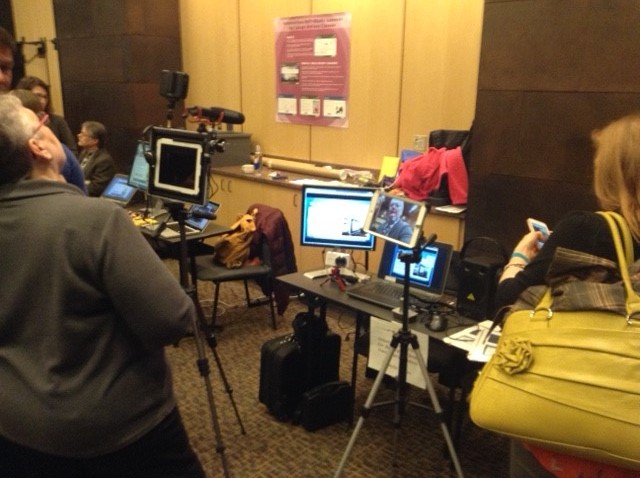
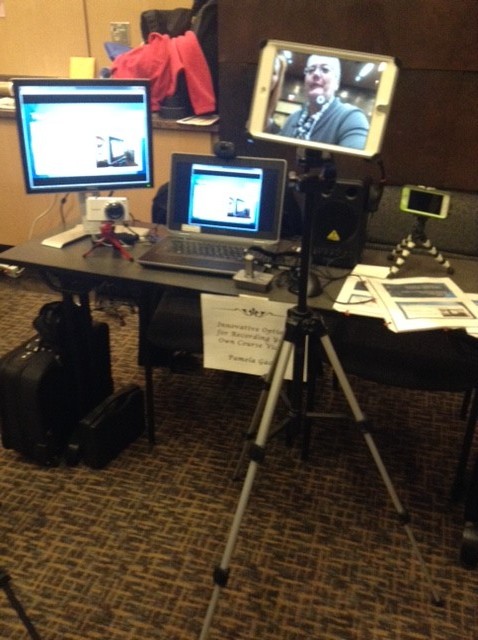
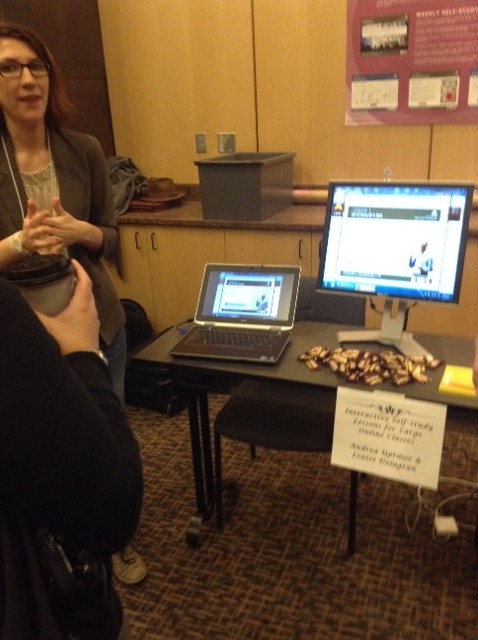


802.11AC
http://en.wikipedia.org/wiki/IEEE_802.11ac
Campus Technology Whitepaper
Dear Plamen,
In the mobile era we live in, your students expect more from their institution’s wireless capabilities.
In this informative whitepaper, you’ll learn how deploying the first wireless standard (802.11 AC) where the speed of wireless is faster than a wired connection can empower your institution to meet the growing, technology driven landscape of today’s higher education environment.
My Note: Campuses are gearing up to the challenges of the Millennials and Gen Z. So do, allegedly, the SCSU IT. BOYD is now a term, which (finally, after 3 years of IMS proposing it to CETL) is waved forth and back at the SCSU campus in a lipservice attempt to convince stakeholders and public how much SCSU is with the times.
Once details transpire, however, one can see that 802.11AC allows 1GB connection and for the last 15 years, the SCSU IT never made it transparent (discussion? forget it), when 1 GB LAN will come to the campus. How can SCSU IT wave the BYOD flag, if older and more important issues are not resolved? Even if they are resolved, how does SCSU IT expect faculty to embrace the technology, if it is sold by the IT people? The sound pedagogical approach to new technologies must be done by faculty not by IT folks.
In order for BYOD, for that matter any other technology on campus to work (work means to a very large degree “accepted by educators,” the second most important stakeholder after the students – faculty – must be on board. Are they really on board controlled and dimmed by the SCSU IT?
5 Essential Insights About Mobile Learning
http://ww2.kqed.org/mindshift/2014/07/15/5-essential-insights-about-mobile-learning/
1. Set goals and expectations for teaching and learning with mobile devices before worrying about the device itself.
St. Vrain Valley School District in Colorado,
Mooresville Graded School District
Consolidated High School District 230
2. Develop a strong community of support for the initiative early and keep up transparent communication with parents and community members throughout the process.
Forsyth County Schools in Georgia.
3. Think about equity, but don’t let it stop forward motion.
includes both urban and rural areas,
4. Evaluate the effectiveness of a mobile learning initiative based on the goals set at the beginning of the rollout.
5. Some of the biggest lessons learned include giving up control and trusting students.
included students in the discussions
STAY NIMBLE
While these mobile learning pioneers have seen some of the pitfalls and can help districts new to the game avoid the same stumbles, this space is changing quickly and every community’s needs will be different.
“It’s no longer just something you implement; it’s evolving and it’s unique in each location,” Bjerede said. “If you try to be cookie cutter about it you won’t meet the needs of every kid in every classroom.”
The technology will change, students will surprise their teachers and the best advice to district leaders is to stay open to all the possibilities and allow students to take control of the tremendous learning opportunity that having a device at all times could offer them.
=====================================
My note: Kathrina Schwartz offers an opinion, which reflects the second wave (withdrawl) in the 3 steps of innovation
The Struggles and Realities of Student-Driven Learning and BYOD
http://ww2.kqed.org/mindshift/2014/07/07/the-struggles-and-realities-of-student-driven-learning-and-byod/
A 2013 Pew study revealed that only 35 percent of teachers at the lowest income schools allow their students to look up information on their mobile devices, as compared to 52 percent of teachers at wealthier schools.
Many advocates of using mobile technologies say the often cited issues of student distraction are just excuses not to try something new.
“The way you discourage it is engage them in the activity so they don’t even think of sending a text. You’ve got to jump in and play their game or you’re going to lose them.”
Angela Crawford has heard all the arguments of BYOD evangelists, but doesn’t see how they match the reality of her classroom. “BYOD is very problematic in many schools, mine included, because we have a prominent engagement problem,” Crawford said.
Tactics to improve engagement like making work relevant to her students’ lives or letting them use their phones in class to look up information, haven’t worked for Crawford, although she’s tried.
When she first started, Crawford was enthusiastic about jumping into collaborative, project-based learning. “I thought my colleagues were monsters because of how they were teaching,” she said of a school where she previously worked and where teachers lectured all the time. She tried to teach students through projects, but found it was a disaster. To her students’ parents, her efforts to make the classroom “student-centered” looked like she wasn’t teaching. “There is a different perception of what a teacher should be in different cultures,” Crawford said. “And in the African-American community in the South the teacher is supposed to do direct instruction.”
“What works best for each student is really the heart of student-centered learning,” Crawford said. “Sometimes what the student needs best is direct instruction. They need that authoritative, in-control figure who is directing their learning and will get them where they need to go.” Many of Crawford’s students come from homes run by single mothers who rule with an iron hand. She tries to replicate that attitude and presence. “They respond to that; they like it,” Crawford said. “It’s comforting to them.”
Still, Crawford will not be experimenting with a bring-your-own-device program. “My problem with education innovation is we tend to want to take a new technology or a new idea and go forth with it as if it’s the silver bullet,” Crawford said. “What happens is that teachers who teach in my type of environment realize this would be a disaster in my classroom.”
Crawford is skeptical that kids in higher income areas aren’t misusing technology too. Her children attend school in a more affluent district and they tell her that kids are constantly messing around on their devices. They just switch screens when a teacher comes by. They get away with it because their teachers trust them to do their work.
“I think kids in middle class or upper middle class schools are equally distracted as low-income students,” said Bob Lenz, director of innovation at Envision Schools, a small charter network that’s part of the deeper learning movement. “It’s just that because of the privilege of their background the content and the skills that they need to gain in school — they’re coming with a lot of those skills already– so it’s not as urgently needed.”
Top 20 in Educational Technology to Connect with through Social Media
http://blog.aace.org/2015/03/22/top-20-in-educational-technology-to-connect-with-through-social-media/
My note: met Tony Bates at a conference at UND in 2004. Great guy
danah boyd is required reading in my LIB 290 Social Media and Global Issues
Howard Rheingold is a living legend.

One year or less (2015–2016):
- BYOD
- Cloud computing
- Makerspaces
- Mobile learning
Two to three years (2017–2018):
- 3D printing/rapid prototyping
- Adaptive learning technologies
- Information visualization
- Learning analytics
Four to five years (2019–2020):
- Badges/Microcredit
- Drones
- Visual data analysis
- Wearable technology
The NMC’s interim K–12 Horizon Report can be downloaded for free.
Midwest AV Summit

Matthew Clay : Active Learning Spaces
partners across campus for IT/AV: CETL
What is the most important key for creating active learning spaces (ALS).
Mathew shared his work with CETL and his understanding of the importance of faculty being brought to the table. Faculty as equal stakeholder in the process.
In a conversation with him after the presentation, he agreed that faculty must be the leading force in in generating ideas what new technology and how to implement technology in the classroom. He agreed that at the present IT/AV staff is the leading force and this is a corrupt statuquo
key partnerships:
faculty and academic affairs, students, facilities, architects, engineers, contractors, furniture vendors, IT (networking, support instructional design)
challanges: ITS mindset (conservative), Administration must be on board (money), Funding.
MnSCU is not Google friendly. 60% of the staff is not doing the same tasks as 3 years ago.
Open about challenges, sharing more with faculty. Nice to hear this, but the communication must be much larger, to the point when faculty are equal partners in a relationship, which is not far from equal decision making.
If faculty is not considered a REAL stakeholder (versus intimated body in a meeting which is controlled by IT people), the entire technology use goes down the drain. Faculty is much stronger relationship with students then IT is with students. The presentation put weight on IT staff and its connection with students’ needs. It is questionable how IT staff can make stronger connection then faculty, who are in a daily contact with students.
The issue is how to assist faculty to catch up with the technology, not how IT staff to rival faculty in their connection with students. What faculty lacks in understanding of technology cannot be replaced by IT staff increasing interaction with students, but rather assisting faculty with coming to terms with technology.
maintaining innovation: fail fast and fail forward; keep up to date with technology (blank statement); always look for new furniture; focus on space design instead of just A/V; Challenge yourself with new ideas; always learn from your mistakes; always get feedback from students and faculty (again, the PERIPHERAL role of faculty. Is feedback all expected from faculty? It faculty and IT staff must be equal partners at the decision table. not faculty being consulted at decision made by IT staff)
Google Glass mentioned, Pebble watches. supposedly to understand students habits. Big data used to profiling students is very fashionable, but is it the egg in the basket?
they have 3d printer, Inoculus. Makerspace mentioned
examples how to use 3d printing for education (LRS archive collections, MN digital library).
the presenter kept asking if there are questions. it makes me wonder how far back (pedagogically or androgogically) IT staff must be to NOT consider backchanneling. Social media is not a novelty and harvesting opinions and questions using social media should not be neglected

digital classroom breakdown session
Break down session: Digital Classroom
technical, very IT. I am not versed enough to draw impression on how it projects over real faculty work. HDMI cables.
relating to the previous presentation: I really appreciate the IT / AV staff handling all this information, which is complex and important; but during my 15 years tenure at SCSU I learned to be suspicious of when the complexity and the importance of the techy matter starts asserting itself as leading when the pedagogy in the classroom is determined.
HD flow and other hardware and software solutions
VLAN 3. lecture capture.
BYOD support in the classroom: about half of the room raised their hands.



